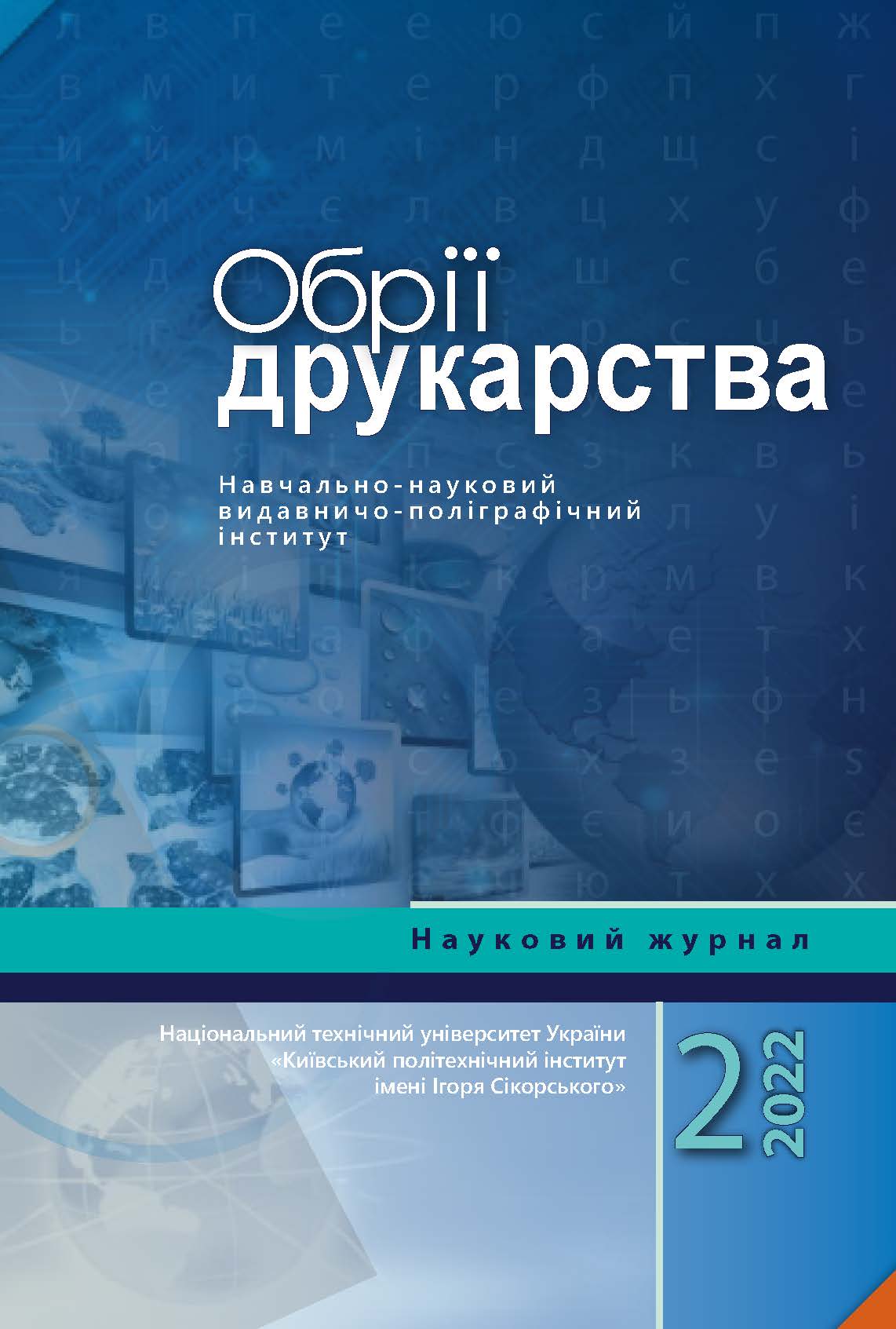Методологічні засади дослідження неформальних комунікацій (на прикладі чуток, що поширюються у соціальних медіа)
DOI:
https://doi.org/10.20535/2522-1078.2022.2(12).268127Ключові слова:
неформальні комунікації, соціальні комунікації, чутки, наукові методиАнотація
Неформальні комунікації набувають особливої ваги в умовах інформаційного суспільства, впливових соціальних мереж та постмодерного суспільства. Наукове дослідження неформальних комунікацій вимагає відповідної методології. Предметом дослідження стали методологічні підходи до вивчення неформальних соціальних комунікацій. Мета статті – окреслити їх у контексті як загальнонаукових методів (аналіз, синтез, узагальнення) та підходів (системний, соціокомунікативний підходи), так і специфічних методів, які характеризують соціальні комунікації у сучасному постмодерному світі. Системний підхід до дослідження було забезпечено завдяки аналізу методів, застосованих в українських та зарубіжних наукових роботах, та синтезу для розуміння процесу їх вивчення в цілому. Соціокомунікативний підхід застосовано для виокремлення методів вивчення неформальних комунікацій з соціокомунікативної точки зору.
Посилання
Allport G.W. & Postman L. (1947). The psychology of rumor. New York, Holt.
Knapp, R. (1944). A psychology of rumor. Public Opinion Quarterly, 8/1, 22–37.
Thompson, D. (2008). Counterknowledge. WW Norton & Company.
Bondielli, A., & Marcelloni, F. (2019). A survey on fake news and rumour detection techniques. Information Sciences, 497, 38-55.
Zubiaga, A., Liakata, M., Procter, R., Wong Sak Hoi, G., & Tolmie, P. (2016). Analysing how people orient to and spread rumours in social media by looking at conversational threads. PloS one, 11(3), e0150989.
Mitra, T., & Gilbert, E. (2015). Credbank: A large-scale social media corpus with associated credibility annotations. In Proceedings of the international AAAI conference on web and social media (Vol. 9, No. 1, pp. 258-267).
Wang, Y., McKee, M., Torbica, A., & Stuckler, D. (2019). Systematic literature review on the spread of health-related misinformation on social media. Social science & medicine, 240, 112552.
Wang, B., Chen, G., Fu, L., Song, L., & Wang, X. (2017). Drimux: Dynamic rumor influence minimization with user experience in social networks. IEEE Transactions on Knowledge and Data Engineering, 29(10), 2168-2181.
Na, K., Garrett, R. K., & Slater, M. D. (2018). Rumor acceptance during public health crises: Testing the emotional congruence hypothesis. Journal of Health Communication, 23(8), 791-799.
Ahsan, M., Kumari, M., & Sharma, T. P. (2019). Rumors detection, verification and controlling mechanisms in online social networks: A survey. Online Social Networks and Media, 14, 100050.
Alkhodair, S. A., Ding, S. H., Fung, B. C., & Liu, J. (2020). Detecting breaking news rumors of emerging topics in social media. Information Processing & Management, 57(2), 102018.
DiFonzo, N., Bordia, P., & Rosnow, R. L. (1994). Reining in rumors. Organizational Dynamics, 23(1), 47-62.
Jong, W., & Dückers, M. L. (2016). Self-correcting mechanisms and echo-effects in social media: An analysis of the “gunman in the newsroom” crisis. Computers in Human Behavior, 59, 334-341.
Meel, P., & Vishwakarma, D. K. (2020). Fake news, rumor, information pollution in social media and web: A contemporary survey of state-of-the-arts, challenges and opportunities. Expert Systems with Applications, 153, 112986.
Zhao, L., Yin, J., & Song, Y. (2016). An exploration of rumor combating behavior on social media in the context of social crises. Computers in Human Behavior, 58, 25-36.
##submission.downloads##
Опубліковано
Як цитувати
Номер
Розділ
Ліцензія
Авторське право (c) 2022 О. А. Юркова

Ця робота ліцензується відповідно до Creative Commons Attribution 4.0 International License.
Автори, які публікуються у цьому журналі, погоджуються з наступними умовами:
- Автори залишають за собою право на авторство своєї роботи та передають журналу право першої публікації цієї роботи на умовах ліцензії Creative Commons Attribution 4.0 International License, котра дозволяє іншим особам вільно розповсюджувати опубліковану роботу з обов'язковим посиланням на авторів оригінальної роботи та першу публікацію роботи у цьому журналі.
- Автори мають право укладати самостійні додаткові угоди щодо неексклюзивного розповсюдження роботи у тому вигляді, в якому вона була опублікована цим журналом (наприклад, розміщувати роботу в електронному сховищі установи або публікувати у складі монографії), за умови збереження посилання на першу публікацію роботи у цьому журналі.

